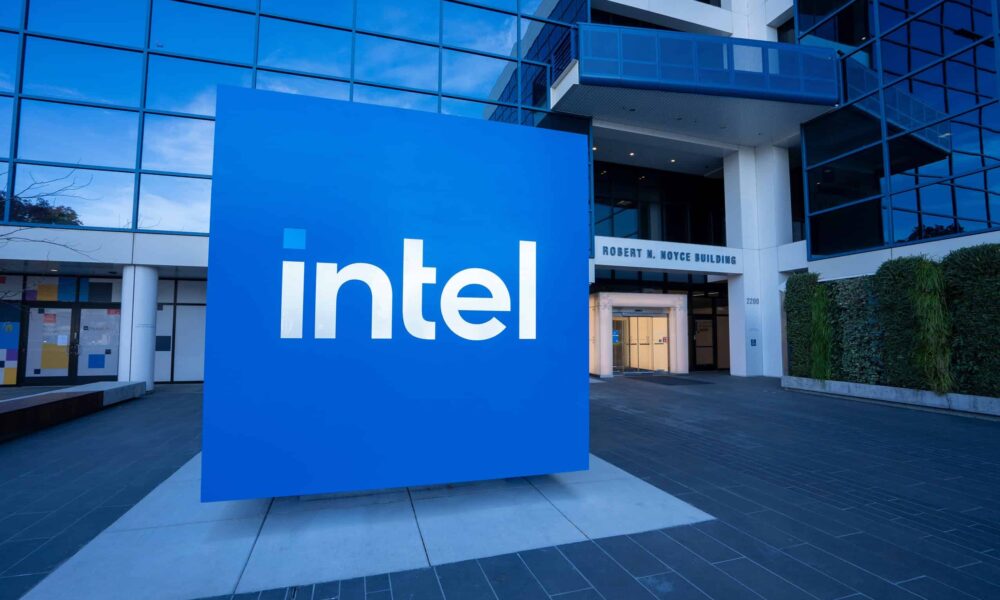On Friday, January 2, Intel is on the verge of experiencing a colossal market value loss, estimated to be around $25 billion. This dramatic drop, the largest since 2000, comes after the company suspended its dividends and announced layoffs as part of a significant and costly restructuring plan. These developments have raised concerns about Intel’s future and its ability to compete in the rapidly evolving semiconductor industry. The Intel market value loss has shocked investors and analysts alike, signaling the possibility that the company may no longer hold the dominant position it once did in the tech world.
Intel’s stock price plummeted by approximately 20% in pre-market trading, following a quarterly revenue forecast that fell well below analyst expectations released on Thursday. Additionally, the company revealed plans to cut 15% of its workforce, fueling fears about its ability to keep up with its competitors, particularly Taiwan’s TSMC and other leading manufacturers in the semiconductor market. The Intel market value loss underscores the dire state of affairs within the company and raises critical questions about its future in the tech landscape.
The Fall of a Giant: A Historical Perspective on Intel Market Value Loss
Once the world’s largest chipmaker, Intel was a key player in the dot-com era alongside companies like Cisco, Microsoft, and Dell. In the year 2000, Intel’s market capitalization reached nearly $500 billion, making it one of the most valuable tech companies globally. The company was synonymous with the rise of personal computers and its dominance in the microprocessor market was unmatched. However, the market downturn that same year proved devastating for Intel, and its stock price never fully recovered from the collapse. The Intel market value loss in 2000 was a watershed moment, signaling the beginning of a slow decline for the once-mighty tech giant.
Fast forward to the present day, and Intel is facing another major setback. If the estimated losses materialize, Intel’s market value could fall to around $100 billion, representing less than 5% of Nvidia’s value and roughly 40% of AMD’s market capitalization. These are the very companies that Intel dominated in the PC chip segment for decades. The Intel market value loss is a stark reminder of how far the company has fallen in a rapidly changing tech environment.
A Changing Landscape in the Semiconductor Industry
Intel’s struggles come at a time when the semiconductor industry is undergoing a major transformation. Taiwan Semiconductor Manufacturing Company (TSMC), which has rapidly grown in recent years, has emerged as a dominant force in the market, offering cutting-edge chip manufacturing capabilities that have left Intel playing catch-up. TSMC’s advanced chip technology has placed it ahead of Intel in key areas like 5nm chip production, and its strong focus on the development of chips for artificial intelligence (AI) and other emerging technologies has positioned it as a leader in the field.
The shift in power within the semiconductor market has been a major factor contributing to the Intel market value loss. As TSMC and other competitors forge ahead with innovative chip designs and production techniques, Intel has struggled to keep up. Once a leader in semiconductor technology, Intel now finds itself fighting to maintain its relevance in a market that has significantly evolved beyond its traditional strengths. The growing demand for chips used in data centers, mobile devices, and AI applications has intensified the pressure on Intel to innovate or risk falling further behind its competitors. This evolving landscape has only exacerbated the Intel market value loss, as investors have grown increasingly concerned about the company’s future prospects.
Intel Market Value Loss: Job Cuts and the Road Ahead for Intel
Intel’s announcement of a 15% workforce reduction signals the scale of the company’s restructuring efforts. The job cuts, which are part of an effort to reduce costs and streamline operations, come as Intel faces heightened competition from companies like Nvidia, AMD, and TSMC. The Intel market value loss is, in many ways, a reflection of the company’s inability to adapt to the shifting dynamics of the semiconductor industry. While these changes may provide short-term relief to Intel’s bottom line, the long-term implications for the company’s ability to compete remain uncertain.
Michael Schulman, Chief Investment Officer at Running Point Capital, commented on Intel’s challenges: “Intel has been one of the forgotten giants of the tech world over the past two decades. It never regained its peak from the year 2000 and is struggling to bring profits back to the levels they were before the AI revolution.” Schulman’s assessment highlights the ongoing difficulty Intel faces in adapting to the rapid pace of technological change. As AI and machine learning technologies become increasingly central to the global economy, Intel’s ability to evolve its product offerings and maintain its relevance in the semiconductor market will be crucial for its future success.
Intel’s Innovation Struggles: Can the Company Regain its Leadership?
Intel’s struggle to keep up with the pace of innovation in the semiconductor industry is one of the main factors contributing to its market decline. While the company was once a leader in chip design and manufacturing, it has increasingly lagged behind rivals such as AMD and Nvidia, both of which have capitalized on emerging trends in AI and high-performance computing. The Intel market value loss is directly tied to the company’s inability to innovate at the same pace as its competitors.
Intel’s reliance on older manufacturing processes, combined with delays in transitioning to new chip technologies, has allowed competitors to outpace it in key areas. The company’s recent attempts to catch up, including the launch of its own AI-focused chips and investments in new chip fabs, have yet to yield significant results. The Intel market value loss is a direct result of these failures, as the company’s stock has suffered in response to its inability to capitalize on the latest technological advancements.
In order for Intel to regain its leadership position in the semiconductor industry, the company will need to focus heavily on innovation and research and development. It must also prioritize partnerships with other tech firms to ensure it remains competitive in the AI and data center sectors. Without a clear roadmap for innovation, Intel risks being overtaken by rivals who are better equipped to meet the demands of the next generation of computing technologies. The Intel market value loss, if not addressed, could signal a prolonged period of decline for the company.
The Long-Term Outlook for Intel: Can It Survive the Restructuring?
As Intel embarks on its restructuring journey, the company faces a monumental challenge in reinventing itself and reclaiming its position as a leader in the tech industry. The future of Intel will depend heavily on its ability to adapt to the evolving landscape of semiconductor manufacturing, particularly as the demand for advanced chips continues to grow. The Intel market value loss is a reflection of the difficulties Intel faces as it tries to reposition itself in an increasingly competitive market.
Intel’s ability to innovate in areas such as AI, machine learning, and high-performance computing will be critical for determining its long-term success. Additionally, the company’s ability to rebuild investor confidence and deliver consistent profits will play a key role in determining its market value in the coming years. The Intel market value loss could prove to be a turning point for the company, but only if it can successfully navigate its restructuring efforts and emerge with a renewed focus on innovation.
A Reckoning for Intel: The Final Word on the Intel Market Value Loss
In conclusion, Intel’s massive market value loss, combined with job cuts and its struggle to compete with emerging players in the semiconductor industry, has raised serious concerns about its future prospects. While the company remains one of the largest players in the tech industry, its ability to survive the ongoing challenges of restructuring and technological change remains uncertain. The Intel market value loss could be a signal that the company is at a critical crossroads, where it must either reinvent itself or risk becoming irrelevant in the rapidly evolving semiconductor space.
The coming years will be pivotal for Intel as it attempts to redefine itself in an increasingly competitive and fast-paced market. If the company can successfully execute its restructuring plan and regain its innovation edge, there may be hope for a resurgence. However, if it continues to lag behind its competitors, the Intel market value loss may only deepen, further cementing the company’s decline as a tech leader. Only time will tell whether Intel can weather this storm and emerge as a viable force in the next era of computing.



